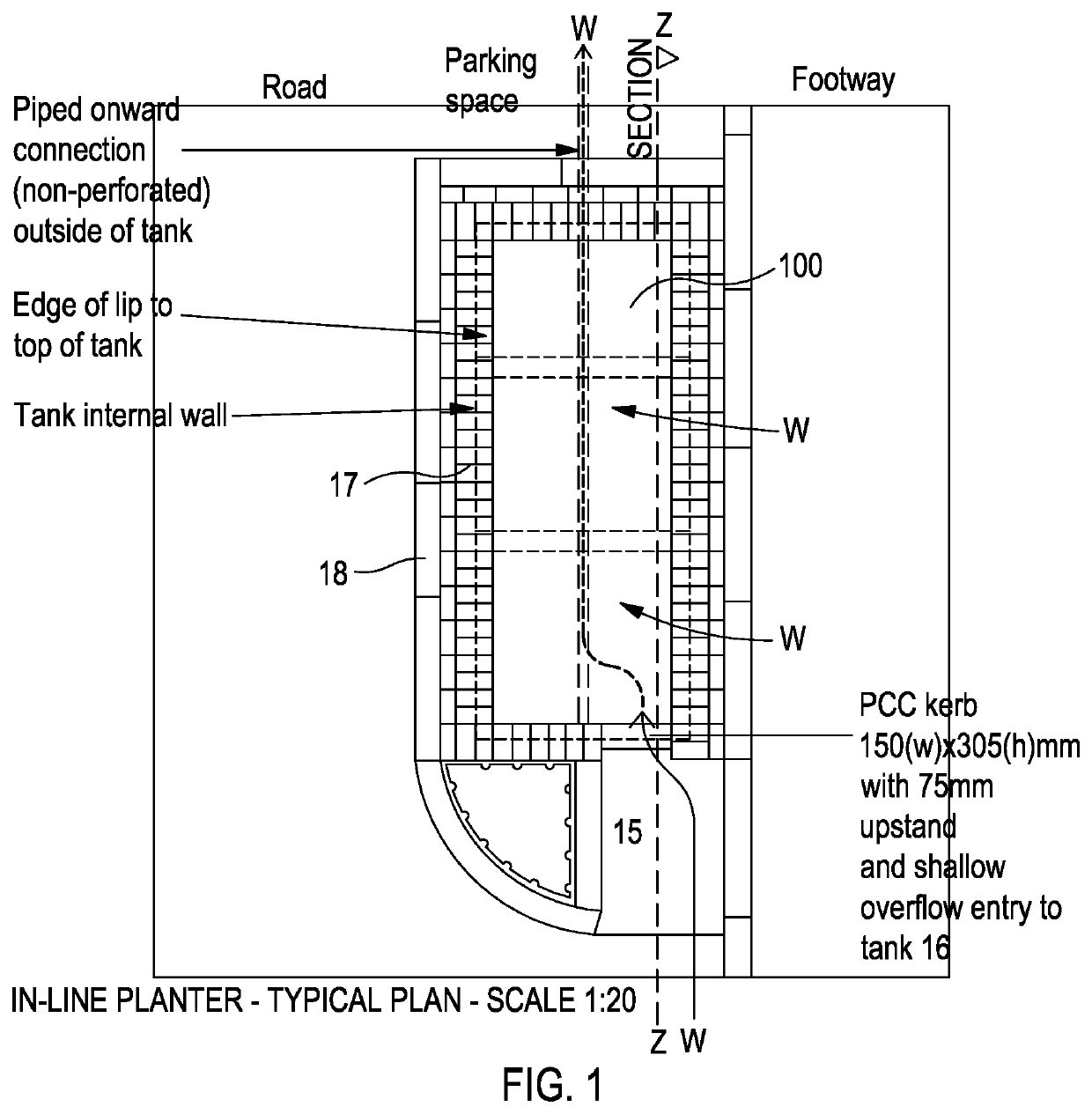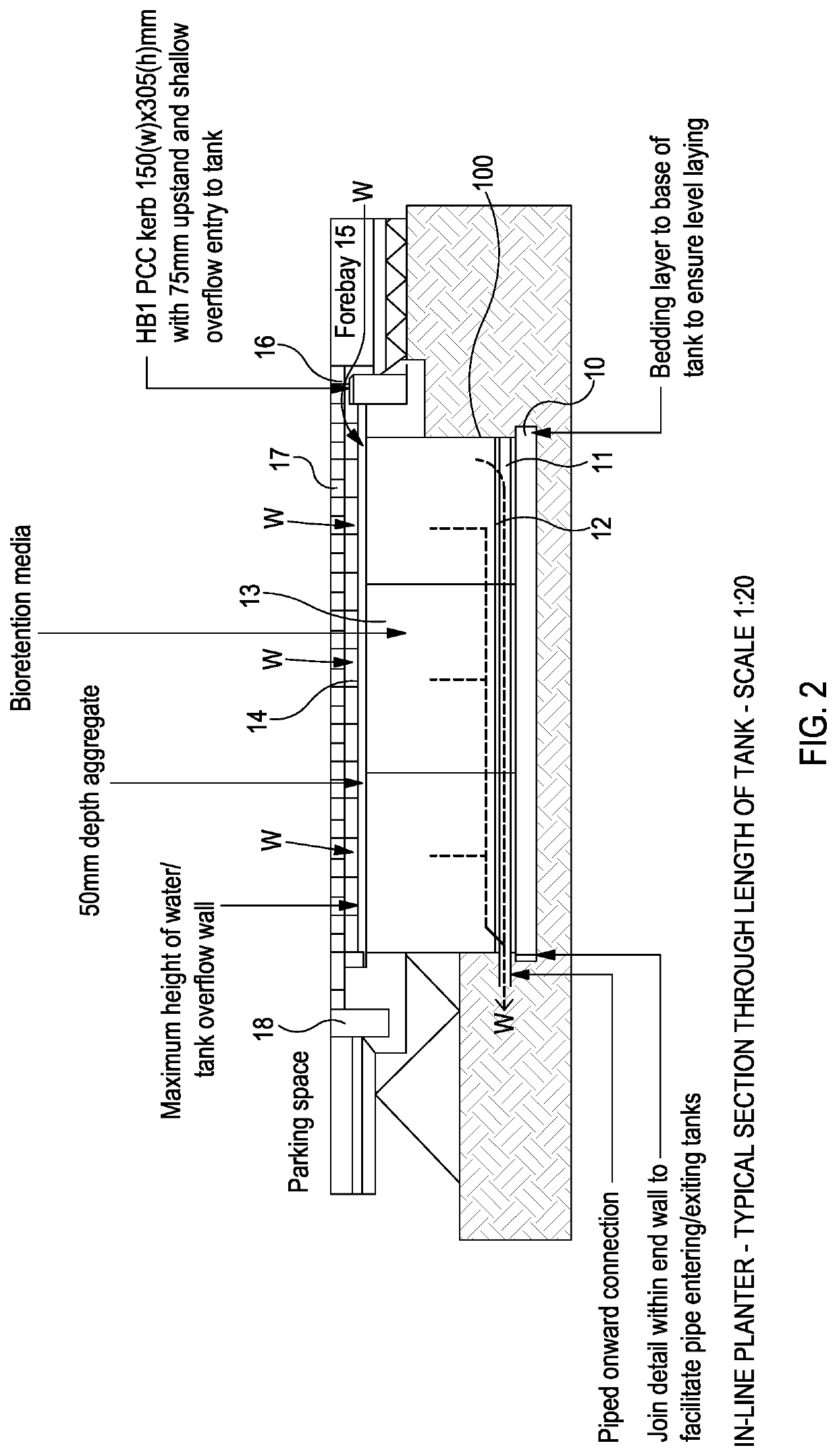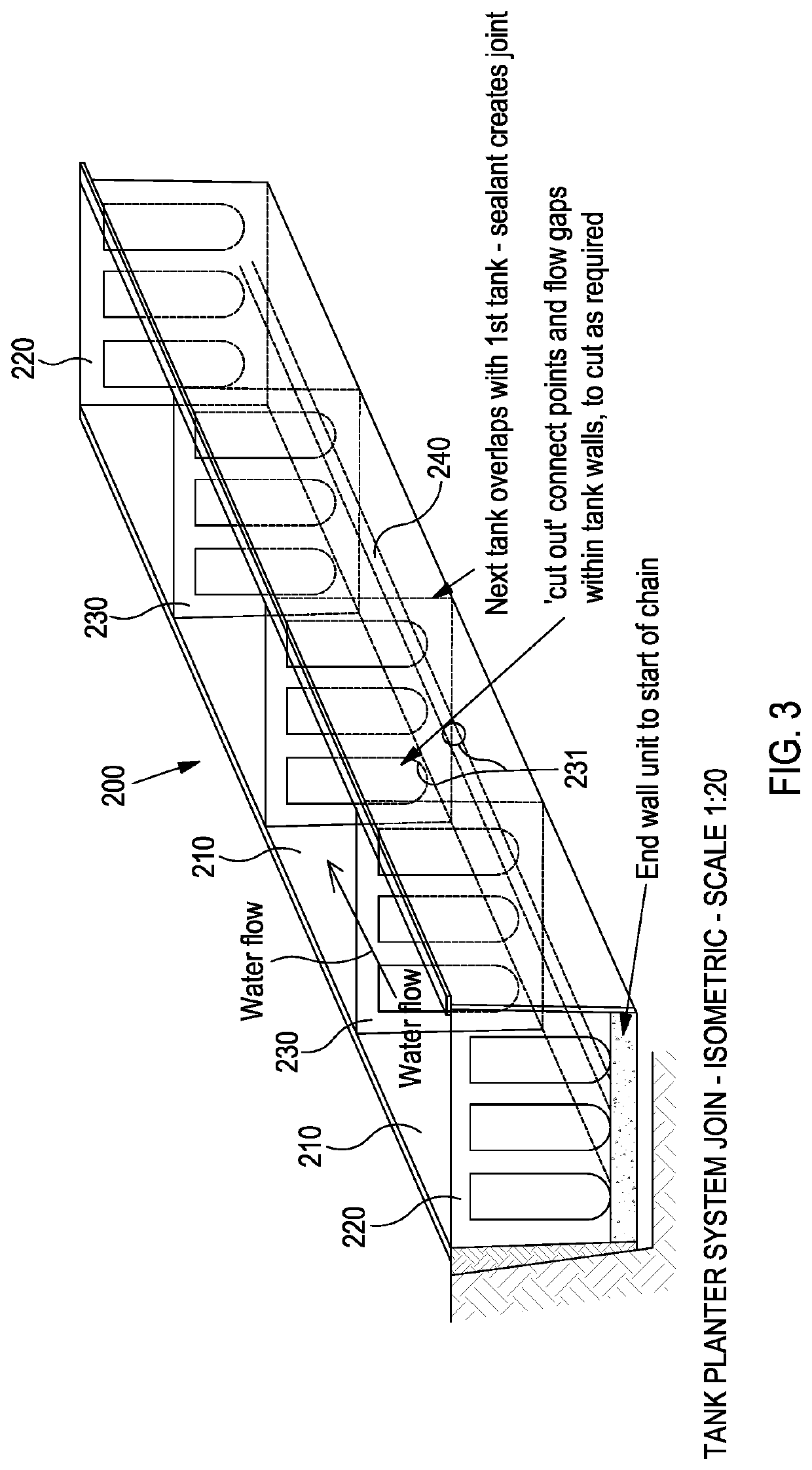Modular rain garden system
- Summary
- Abstract
- Description
- Claims
- Application Information
AI Technical Summary
Benefits of technology
Problems solved by technology
Method used
Image
Examples
Embodiment Construction
[0058]With reference to FIGS. 1 and 2, a typical urban installation for a modular rain garden system in accordance with the invention is shown. The location is a planted bed adjacent a line of parking spaces on a road. The tank or trough formed by the modular rain garden system is shown generally as 100 and will be described in more detail with reference to the other figures below. In terms of this example installation, the tank or trough 100 is sunk into a hole which is lined at the bottom with a bedding layer 10. The trough 100 has an internal perforated pipe 11 and a grid layer 12, above which the trough is filled with bioretention media 13, such as soil media. A 50 mm layer of aggregate 14 forms the top layer.
[0059]A forebay 15 is provided to control the flow of water into the trough 100 and act as a silt and debris filter. A pre-cast concrete kerb 16 provides an overflow lip (75 mm in this example), over which the water W passes when there is a high enough flow of water into th...
PUM
 Login to View More
Login to View More Abstract
Description
Claims
Application Information
 Login to View More
Login to View More - R&D
- Intellectual Property
- Life Sciences
- Materials
- Tech Scout
- Unparalleled Data Quality
- Higher Quality Content
- 60% Fewer Hallucinations
Browse by: Latest US Patents, China's latest patents, Technical Efficacy Thesaurus, Application Domain, Technology Topic, Popular Technical Reports.
© 2025 PatSnap. All rights reserved.Legal|Privacy policy|Modern Slavery Act Transparency Statement|Sitemap|About US| Contact US: help@patsnap.com



